What are the precursor symptoms of liver disease?
Thanks for the invitation!
When I was a young man, about 16 years old, I was in a basketball game, was a teammate with elbow hard elbow right under the ribs of the liver, at that time only feel a little pain, did not pay attention to, but after a few days, found that the right abdominal pain, walking hidden pain, bending over pain aggravated, general weakness, eating does not smell good, the stomach is distended and bulging.
One day, when I was sitting on a piece of barstone in front of my house to take a rest, I was seen by a grandfather in the village, who told me, "Your whole body is waxen yellow, and the whites of your eyes are yellow, so you have got the yellow evil disease! Is your urine yellow?" I said, "It's very yellow, like vegetable oil." Quickly go to the hospital to find a doctor to see, is a strange disease, do not see can not be! He said.
At the time I was scared! Will this disease kill me? Mom told me to go to my great-uncle. I went to my great-uncle, who worked in a movie theater. My great-uncle took me to the County Hospital of Traditional Chinese Medicine and hired a young doctor, who I heard was a senior student who had just graduated from the Provincial College of Traditional Chinese Medicine.
The doctor looked at my tongue, the white of the eyes, told me to take the medicine cotton to catch urine to see, urine was vegetable oil, yellowish skin color, right abdominal hand pressure pain, and gently pressure with the hand, found that the hepatomegaly. I was then prescribed "dandelion group" several doses of traditional Chinese medicine, I was told to serve seven doses, after serving seven doses and then go to the clinic to re-prescribe, after several times of re-examination and re-prescription, I remembered to serve about more than twenty doses of traditional Chinese medicine (dandelion group), the condition of the whole well, the urine is not yellow, the whites of the eyes white, the skin is red and normal, and the person also has the strength, and the amount of food is also restored to the normal pre-disease condition. The condition of the patient was completely cured.
Then I found dandelion, decocted into tea, as tea for a period of time, this yellow bile hepatitis, hepatomegaly, completely cut off the root, so far there has been no recurrence!
Do you know that the liver is the largest organ in the human body? The largest organ in the human body is it - liver, adult liver is usually around 1200g, the largest can be up to 2000g, liver is one of the most important organs of the human body, is responsible for detoxification, glycogen operation, protein synthesis, bile production and many other physiological functions, therefore, it is very important to protect the liver. Liver disease is currently the main clinical viral hepatitis (such as hepatitis B), alcoholic liver, drug-induced liver disease, fatty liver, cirrhosis, liver cancer, etc. Take the most common hepatitis B, China's hepatitis B virus carriers and hepatitis B patients in the total population of about 13% or so, this figure is really alarming, so how to identify liver problems, liver problems when there are what symptoms?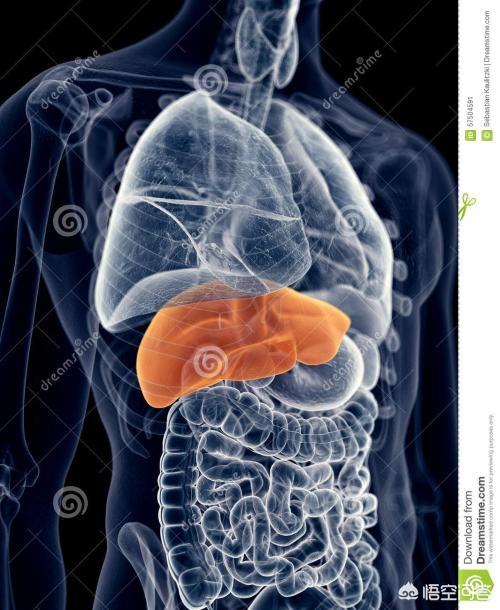
Pharmacist Lee talks about health, click the red button "+ attention" on the upper right, more health issues to share with you!
The liver itself has no nerves, therefore, when there is a problem with the liver, usually the liver will not feel pain, but through some other manifestations, you can still initially determine that the liver may have a problem, and when there is a problem with the liver, there are usually the following symptoms: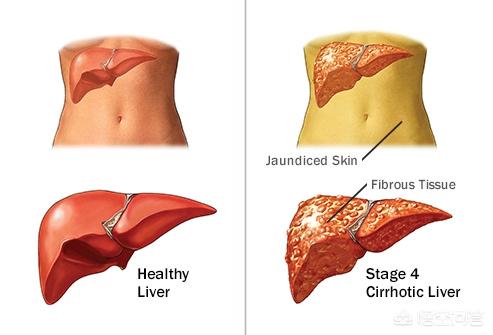
Gastrointestinal symptoms:This is one of the most common symptoms of problems with liver disease.Taiping Shenghui Fang. On the Liver: Liver deficiency gives rise to cold, and cold leads to bitterness and distension, chills and fever, abdominal fullness, and a lack of desire for food and drink.Often liver disease presents with symptoms such as nausea, anorexia of greasy foods, poor appetite, and even vomiting, and splenomegaly.
Physical fatigue:Problems with the liver affect the metabolic function of the liver and the whole organism is affected, therefore, people with liver problems often experience generalized weakness.
Jaundice and itchy skin:Some patients with liver disease will develop jaundice, which is mainly manifested as yellow urine, yellow skin and yellow white eyeballs. Jaundice is also a specific manifestation of liver problems (except physiological jaundice in children), and itching of the skin will also occur when jaundice is too high.
Pain in both ribs and abdomen:Although the liver is not painful, people with chronic liver disease often experience pain in both ribs, even causing abdominal pain. Su Wen. Dirty Qi Fa Shi Lun": In liver disease, pain under the two ribs leads to the lower abdomen, making people angry.
Emotional problems:Problems with the liver lead to liver qi stagnation, which makes people "angry as if they were angry". Liver disease can make people moody and prone to anger. In addition, liver problems also tend to make people panic, emotional instability, insomnia - "as if someone will catch them" (as if someone is chasing them all day long).
hyperopiaLiver problems affect the eyes, and in addition to jaundice in the eyes, vision can be affected, with "blurred vision and darkened eyes".
hemorrhagic tendency: Liver disease can lead to a decrease in liver function, reducing the synthesis of coagulation factors, and the external physiological manifestations are usually symptoms such as bleeding gums, bleeding hemorrhoids, and sometimes even bleeding that is difficult to stop.
If you experience any of the above symptoms, you should seek medical attention to check your liver indicators to confirm whether you have liver problems, and consult a specialist for specific treatment options.
Thanks for reading Pharmacist Lee's Science Q&A, and feel free to continue the discussion with more questions in the comments below!
Different liver diseases will have different manifestations, some liver diseases may not have obvious symptoms in the early stage, and can only be detected when doing liver function tests, and there may be no symptoms in the early stage when there is something growing on the top side of the liver. However, if the typical symptoms appear, it is still necessary to go to the doctor in time.
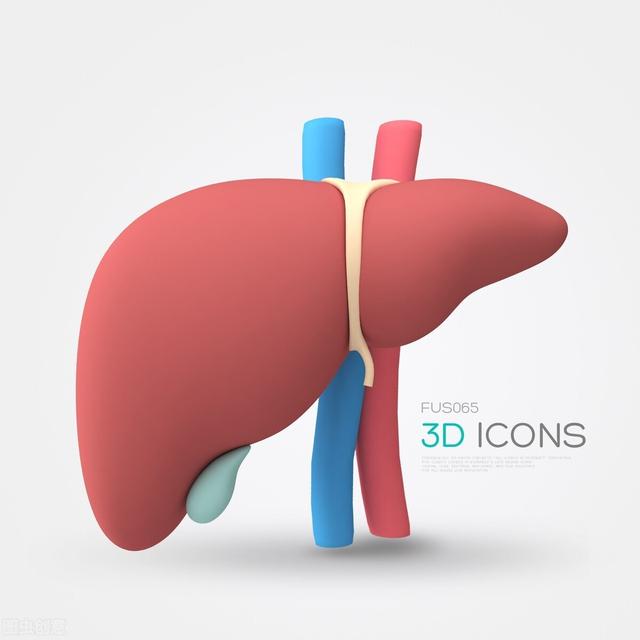
Some time ago I had a classmate whose father had just died of liver cancer, he used to suffer from Hepatitis B when he was young but never went for treatment.
He didn't have any symptoms before, and when he was about 40 years old, he once suddenly developed ascites, generalized edema, and violent vomiting of blood, and after a hospital examination, he was found to have cirrhosis of the liver.
That is to say, for the first 20 years or so, he didn't have any other discomfort, he ate, slept and worked without any problems. Then he developed liver cancer and eventually died.
What are the usual clinical manifestations of liver disease?
- Tiredness and fatigue.
- Digestive symptoms such as nausea, poor appetite, anorexia, diarrhea, and easy early satiety.
- The black and blue color of the face is what we generally also call the face of liver disease.
- There is also the possibility of jaundice, with yellow skin sclera and very yellow urine.
- There may also be inexplicable and persistent itching of the skin all over the body.
- Fever.
- Hepatomegaly.
- When you get to cirrhosis you may develop liver palms
- Spider moles can be found on cirrhosis.
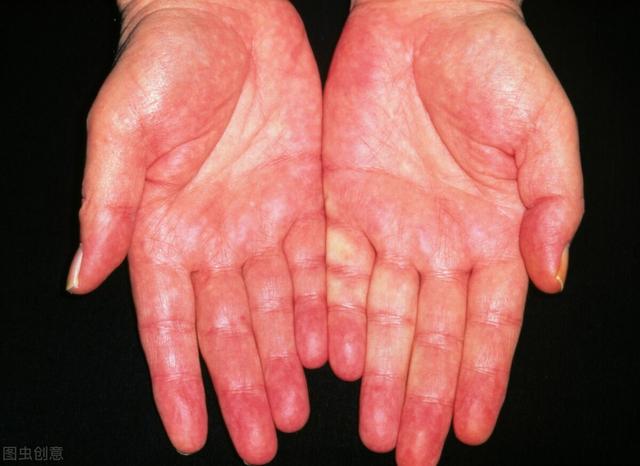
肝掌
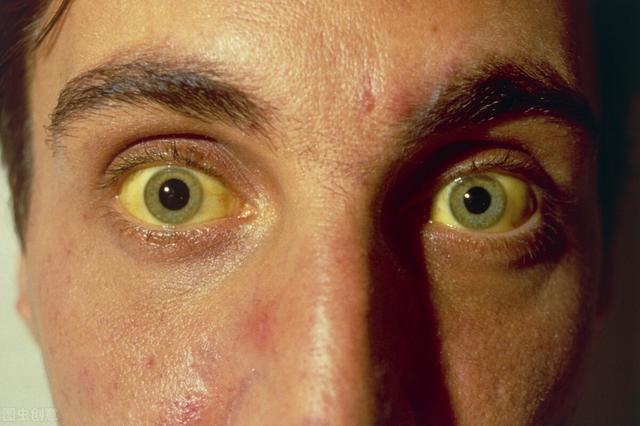
Liver disease with blue and black face with jaundice
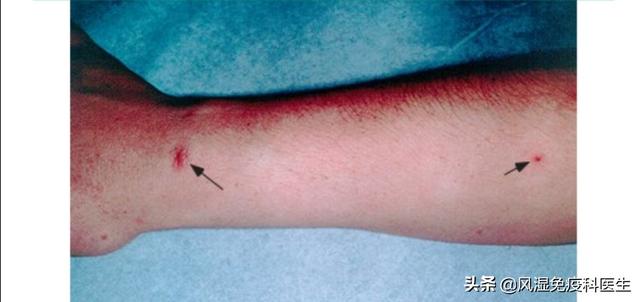
spiderweb
- Patients with cirrhosis may have ascites and even generalized edema.
- Varicose veins of the abdominal wall, esophagus, and rectum can lead to gastrointestinal bleeding in severe cases.
What are some of the indicators that are abnormal and may indicate liver problems?
- Elevated aminotransferases, including alanine aminotransferase and glutamic aminotransferase, are the most commonly used indicators of liver function, but elevations can also be seen in other, i.e., for example, skeletal muscle heart disease.
- Elevated bilirubin in liver function tests.
- Alkaline phosphatase is elevated.
- GGT is elevated.
- An ultrasound of the liver can see if there are any cysts, tumors, fatty liver, hardening of the liver, enlargement and shrinkage of the liver.
- Some patients with unexplained abnormal liver function are also recommended to check for autoimmune liver disease antibodies.
How should you take care of your liver in general?
- Those with hepatitis B must go to the hospital regularly for liver function tests, and also regularly monitor the replication of hepatitis B virus DNA, and initiate antiviral treatment when necessary to prevent cirrhosis and liver cancer.
- Try to minimize alcohol consumption, you can drink in moderation but not in large quantities, as excessive alcohol may lead to alcoholic cirrhosis of the liver.
- Try to control your weight and don't develop too much obesity, which has the potential to damage your liver with fatty liver.
- Avoid medications that are hepatotoxic.
- Try not to eat moldy nuts, such as peanuts containing Aspergillus flavus is very easy to cause liver cancer.
People's living standards are higher, but various diseases are also occurring. Liver disease is a broad concept, and the clinical symptoms of different liver diseases are different. In recent years, the incidence of liver disease has increased, and it is also very harmful to the human body. Therefore, friends must be timely treatment.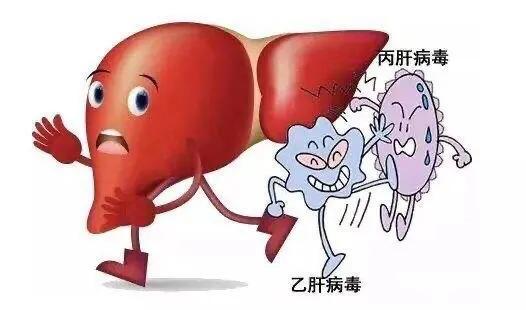
First we need to familiarize ourselves with the types of liver disease
According to the pathogenesis, they can be categorized into viral and non-viral liver diseases.
- viral liver disease
This generally refers to viral hepatitis, such as viral hepatitis A, B, C, D and E.
- Non-viral liver disease
These include the following.
1. Alcoholic liver disease;
2. Drug and toxic liver disease;
3. Abnormal metabolic liver disease;
4. Fatty liver disease.
Symptoms of Liver Disease
1. Gastrointestinal symptoms: such as nausea, anorexia, poor appetite, fatigue, vomiting and diarrhea may occur.
2. Discomfort in the liver area.
3. Systemic manifestations: body weakness, easy fatigue, etc.
4. Spider nevus of the liver.
5. Hepatic ascites.
6. Bleeding tendency: such as bleeding gums, nosebleeds, hemorrhoidal bleeding, gastrointestinal bleeding.
7. Portal hypertension.
8. Hepatic encephalopathy.
Patients with liver disease, if in the case of liver function basically the longest, generally speaking, there is no obvious discomfort, if the liver function appears obvious abnormal, there may be weakness, anorexia, nausea, abdominal distension, poor appetite and so on these symptoms, patients with liver disease, if there is obvious cirrhosis of the liver ascites, there will be obvious liver disease face, manifested as a dark face.
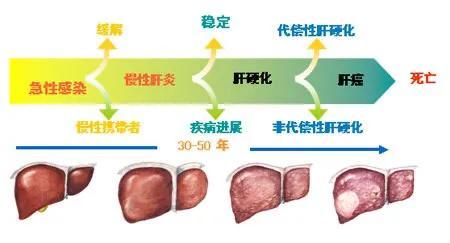
Symptoms in patients with liver disease need to be treated separately depending on the underlying cause and the specific condition. Symptoms of liver disease are useful in the assessment of liver disease conditions as well as in the indication of disease. It is also important to combine laboratory tests and other tests for a thorough evaluation and timely treatment.
typical symptom
skins
The patient has a hepatic face with itchy, dull and lusterless skin, brown pigmentation on both cheeks, and yellowing of the skin and sclera and yellowing of the urine in those with jaundice. In chronic hepatitis, spider nevi can be seen on the neck, forehead, back of the hand, upper arm and other parts of the body.
In addition, patients have reddened skin at the size of the fissure, which fades when pressure is applied, known as liver palms. Patients with alcoholic hepatitis may also see alcoholic facies and rosacea. Patients with autoimmune hepatitis may sometimes develop a rash.
digestive system
Patients may show different degrees of nausea, loss of appetite, abdominal distension, diarrhea or constipation and other dyspeptic symptoms, especially acute hepatitis often have obvious anorexia, due to liver enlargement can appear right upper abdominal pain, examination of the liver area can have tenderness.
Severe hepatitis can have abnormal coagulation function, which can be severe enough to cause gastric mucosal erosion and bleeding, which can result in vague pain in the upper abdomen, black stools, or vomiting of blood.
nervous system
Weakness, lethargy, mental depression, there may be peripheral neuropathy manifestations such as numbness of the extremities, and patients with alcoholic hepatitis may experience memory loss and hand tremor. People with severe hepatitis or alcoholism may have blurred consciousness or even lethargy and coma.
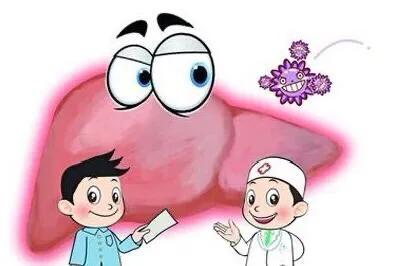
concomitant symptom
Accompanying manifestations can vary depending on the cause of the disease.
About 80% of patients with acute viral hepatitis may have fever, muscle and joint aches, and bradycardia;
Alcoholic hepatitis can be characterized by alcohol toxicity to other organs with corresponding manifestations such as unsteady gait and tremor;
Nonalcoholic hepatitis can be manifested by comorbid metabolic diseases such as hypertension, diabetes mellitus, and hyperuricemia;
Autoimmune hepatitis can be combined with extrahepatic manifestations such as thyroiditis, arthritis, dry syndrome, and rash, as well as amenorrhea and persistent fever.
caveat
Liver disease is very harmful to the human body, especially to the liver function, and the symptoms that appear in each patient are not the same for everyone, so we need to do regular checkups so that we can find the disease at the first time.
For example, patients with common acute hepatitis will experience a range of clinical symptoms. Acute hepatitis A, acute hepatitis E, acute drug hepatitis, acute alcoholic hepatitis and other patients can appear in a short period of time nausea, vomiting, fatigue, loss of appetite, at the same time there can be yellow urine yellow skin and mucous membrane yellow stain. These conditions suggest that there are manifestations of acute hepatitis.
Long-term chronic hepatitis can present some relatively characteristic signs, such as slow liver face, liver palm, spider nevus, etc., in addition to some non-specific symptoms. Even some cirrhosis can show some complications, such as gastrointestinal bleeding, ascites, hepatic encephalopathy and so on.
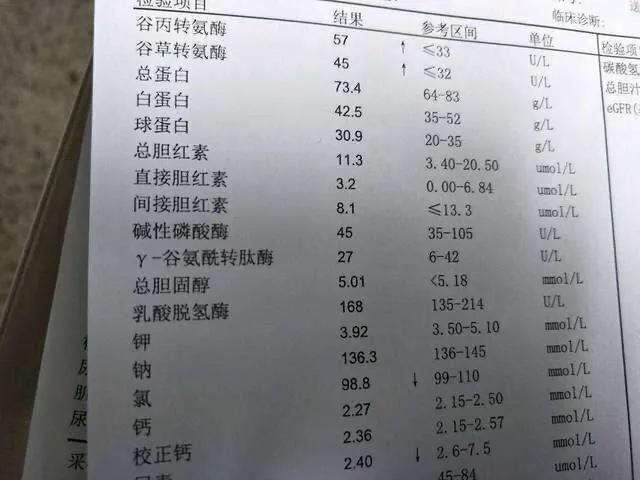
I hope the above will be helpful to you. Popular knowledge is for reference only, not to be used as a means of treatment, encounter problems, please go to the hospital in a timely manner, thank you for your understanding.
Liver disease is caused by damage to liver function or liver cells, resulting in a series of liver-oriented symptoms that affect the patient's work and life. If you suffer from liver disease, you are bound to have more or less, more or less, more or less, more or less, more or less, more or less, more or less, more or less, more or less, more or less, more or less, more or less, obvious or insidious signs, which can be briefly categorized:
1. Systemic symptoms: mainly weakness, easy fatigue, loss of physical strength, mental depression, vague pain in the liver area, obvious after exertion.

2. Symptoms of maldigestion and malabsorption: loss of appetite, dyspepsia, abdominal distension or accompanied by constipation and diarrhea.
3. Yellowing of the skin and sclera, dark urine color.
4. Unexplained bleeding and anemia.
5. Wasting of face, dark and dull face. Patients with chronic hepatitis or cirrhosis of the liver, their face, the skin around the eyes is darker than before the disease, this is due to liver dysfunction, resulting in increased melanin production, called liver disease face.
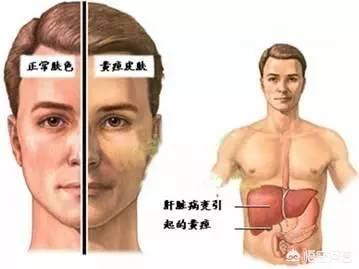
6. In the early stage of cirrhosis, due to the abnormal metabolism of sex hormones, estrogen is increased and androgen is decreased, and the symptoms may include decreased libido, enlarged breasts, atrophied testicles and hair loss in men, and breast swelling and pain, menstruation disorders, breast shrinkage, scanty pubic hair and infertility in women. The appearance of spider nevi and liver palms are related to estrogen increase.
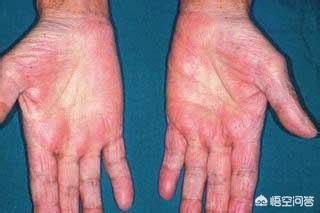
In short, the above points are the precursor symptoms of liver disease, in ordinary life and work if you find one or more of the above, please consult a doctor in a timely manner, so as to achieve early detection, early treatment, early recovery, so as not to miss the best time for treatment.
I hope the above answer can help you, please criticize and correct the shortcomings, pay attention to medical knowledge, learn more content, learn medical knowledge to make the body healthier!
lung diseaseIs a more general concept, as long as the liver function is involved in abnormalities, can be generalized to give the liver disease this pre-diagnosis, further examination can be diagnosed only after the specific disease, the main threat to human liver disease are: viral hepatitis, liver fibrosis, fatty liver, alcoholic liver, drug liver damage and cirrhosis, liver cancer and other liver lesions, these specific diagnosis before the clear are called Liver disease.

Different diseases can cause damage to liver function, but the early clinical manifestations are often different. Below are some common symptoms that may indicate liver lesions:
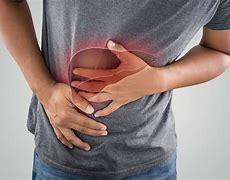
I. Discomfort and pain in the liver area:Among all the symptoms of liver disease, hepatic discomfort and hepatic pain are the most specific, which are common in patients with hepatitis, cirrhosis, hepatocellular carcinoma, and hepatocellular carcinoma patients, due to the increasing size of tumor tissues, which presses the liver periphery, thus leading to progressive aggravation of pain. Because there is no pain nerve inside the liver, so when there is a lesion inside the liver, you will not feel the pain and discomfort in the liver, only when the lesion involves the liver periphery will there be discomfort and pain in the liver, and at this time, the liver disease is already very serious.
II. Systemic manifestations:This is self-perceived by the patient and is the focus of the clinician's questioning, all of which are detailed in the medical record, and we can sometimes detect these abnormalities at an early stage if we are able to reflect on them ourselves on a regular basis.

1, liver function injury will appear the earliest body fatigue, easy to fatigue, but easy to be ignored, and specificity cross, many diseases will appear fatigue, such as anemia is the earliest feeling, so when this symptom must be combined with their own other abnormalities comprehensive judgment.
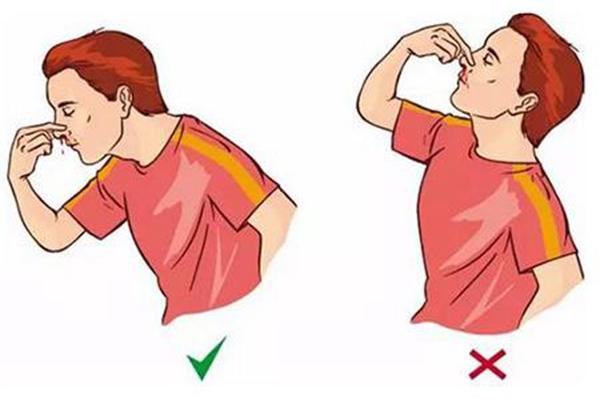
2. Bleeding tendency is also a relatively common systemic manifestation. These patients will mostly find themselves bleeding easily when brushing their teeth, often bleeding from the nose, and some will find petechiae appearing on their bodies for no obvious reason.
Third, the outward appearance of the skin:This is something that clinicians have to record in detail when they write their medical records, and it is also something that doctors find out through observation, so if we pay attention, we will also be able to detect it at an early stage.
1. Dullness of the face: Patients may find their face dull and without luster; unlike sun-tanned skin, this is a pathological condition.

2、Part of the patient can be accompanied by different degrees of jaundice, manifested as yellow eyes, yellow urine, yellow skin, which can be accompanied by skin itching at the same time.
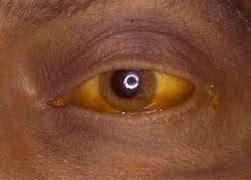
3, liver palm: is the thumb and little finger at the root of the big and small fish skin at the intersection of flaky congestion or red spots, plaques, pressurized into a pale white, decompression and then become red, palm color is normal. Liver palm is one of the important signs of chronic hepatitis and cirrhosis, but it can also be seen in a few healthy people.
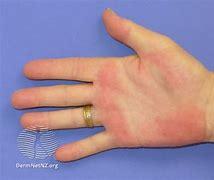
4、Spider nevus: It is a red vascular lesion. The center protrudes and extends many spider leg-like capillaries in all directions. When the central protrusion is pressed with the end of a thin rod, the whole nevus disappears and appears again after releasing it, this early symptom of patients with liver disease can be distinguished from other vascular nevi. It is usually caused by a decrease in the liver's ability to inactivate estrogen and an increase in estrogen levels. In particular, men with spider nevus should pay attention to the examination of liver function.
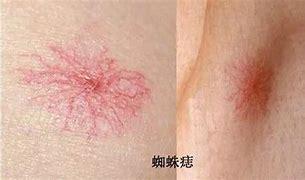
IV. Gastrointestinal symptoms:This is the most common symptom of liver disease, and most patients with liver impairment experience nausea, anorexia, vomiting, poor appetite, and bloating.

V. Ascites:It is usually possible in advanced stages of liver disease, such as cirrhosis with ascites, which indicates that one has entered the era of cirrhosis and long-term liver dysfunction.
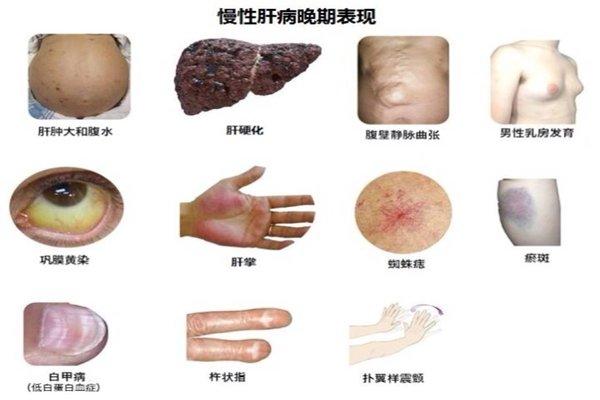
The liver has several physiological functions:
1. The bile-producing action of the liver;
2. The liver is involved in substance metabolism: the liver and sugar metabolism; the liver and protein metabolism; the liver and fat metabolism;
3. The liver is the largest detoxification organ in the human body: the liver detoxifies through chemical action; secretion; accumulation and phagocytosis.
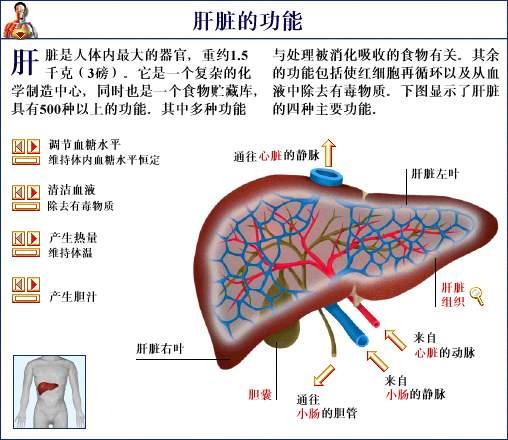
The liver has a huge functional storage capacity:When 70-80% of the liver is removed, it does not show significant physiologic disturbances and the residual liver tissue has the ability to regenerate.
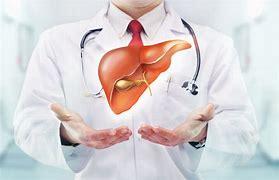
Liver has an important function in the human body, so it is also the most vulnerable to loss, not only diet, tobacco and alcohol, but also improper use of medication, a variety of viruses, bacteria and other tissues and organs of the disease can be involved in the liver, therefore, we have to take good care of our liver, if you find these abnormalities in the early stage, must not be careless, but in time to the hospital for the relevant examination and treatment.
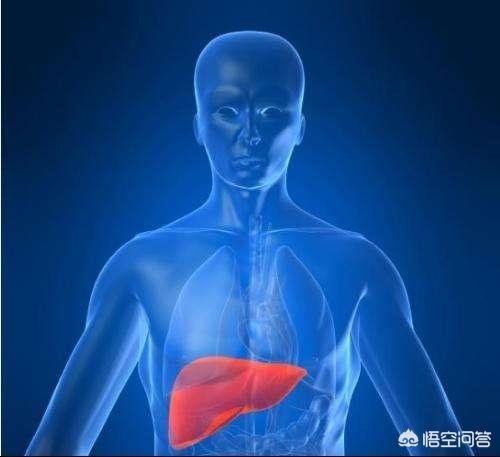
Liver disease, is a collective term for diseases of the liver, the liver is one of the organs of the body's digestive system, all nutrients are metabolized by it, the liver is also an important organ for storing nutrients in the body, glycogen, celiac disease, amino acid peptide chains are on the surface of the liver and inside the liver for round-the-clock activities, metabolism, repair, growth and so on.

The human body is an organism with compensatory function, in the early stage of liver disease, because the degree of lesion is still within the compensatory range of the organism, so the patient may not have any abnormal discomfort, so how can we find liver disease in the early stage? First of all, we said that the liver is a metabolic and digestive organ, so both patients with chronic hepatitis and patients with cirrhosis of the liver may have abdominal pain, abdominal distension, nausea, fatigue, poor appetite, poor sleep, but these symptoms are not specific, can be seen in liver disease, but also can be seen in gastric disorders, pancreatic problems, etc., but when the patient's skin, mucous membranes, sclera and so on, there may gradually appear a yellowish coloration; However, when the patient's skin, mucous membranes, sclera, etc. may gradually develop yellowish coloration, or when the patient experiences pain in the liver area from time to time, these symptoms suggest that the patient may be suffering from liver problems.
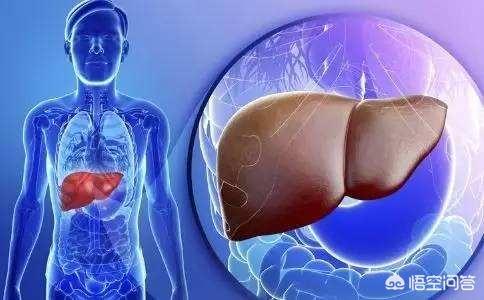
In addition, for female patients, it is especially important to note that when you are in childbearing age and suddenly experience menstrual disorders, or even amenorrhea, after excluding other possible causes of this situation, you need to consider whether you have liver problems. The normal menstrual metabolism of women requires the support of estrogen, progesterone and other sex hormones, but when the patient's liver problems, the activation and inactivation of these hormones lose their normal regularity, and the body metabolism will be disrupted, resulting in menstrual irregularities, or even amenorrhea. However, when the patient's liver has problems, the activation and inactivation of these hormones will lose its normal pattern, and the body's metabolism will be disorganized, resulting in irregular menstruation or even amenorrhea.
Answer: Ye Zi, M.S., M.A.
Welcome to Life Calling for more useful health knowledge.
The liver has a strong self-repair and regeneration function, some minor injuries can be self-repairing, so it is also known as a mute organ, mild injuries to the body often do not have the external performance to give people to be prompted.
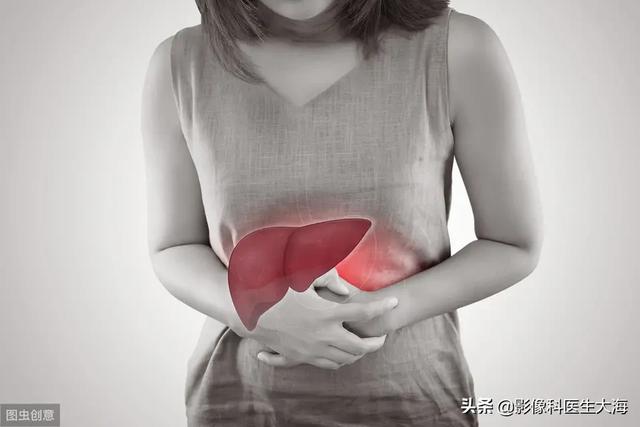
When the body developsWhen jaundice, liver palms, spider moles, itchy skin, right upper abdominal pain, ascites, and bleeding gums are common symptoms of liver disease, theThis indicates severe liver damage, and at this point blood is drawn to check liver function it is abnormal.
The liver secretes bile and also assumes a part of the digestive action, and this part of its function is often neglected, when there is aWhen symptoms of indigestion such as bloating, diarrhea, anorexia, nausea and vomiting are presentPeople often focus on the stomach and intestines and consider whether it's a problem with those organs, often leaving the liver out of the equation and allowing liver damage to worsen.
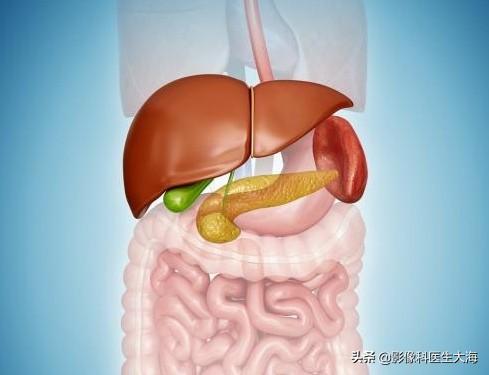
In Chinese medicine, the liverThe main sparing, hiding blood, tendon Hua, open the orifices in the eyes and other functions.When the liver is damaged there isGray temples, dry eyes, insomnia and dreaminess, irritability, loss of color and surface inequality of nails and other external manifestations of the human body.If there are these manifestations on the body do not blindly conclude that there is a problem with the liver, or go to the hospital to check, need to treat the treatment, need to regulate the regulation.
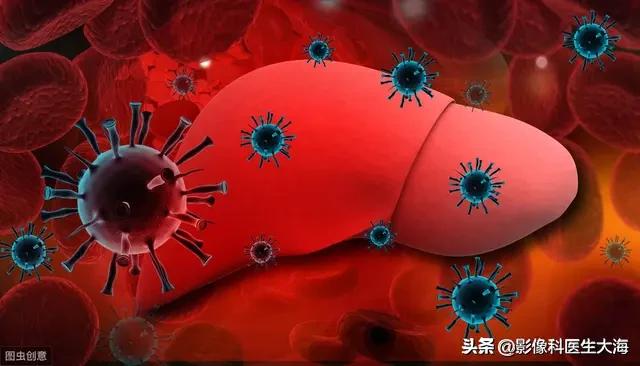
I am the imaging department doctor sea, regularly share health knowledge, like plus attention Oh!
Symptoms of liver precursors 1, baldness and hair loss 2, fatigue 3, jaundice and itchy skin 4, pain in both ribs and abdomen
1. Hair baldness and hair loss:Many alcoholic liver, fatty liver and other liver diseases, the patient's hair will become less and less. This is because the liver is the master of spring, spring is the master of growth, and the kidney is the master of blackness. Hair getting less and less is a problem of the liver, the ability to grow is out of order, and hair turning gray is a problem of the kidney.

2, Physical exhaustion: The liver is the largest organ that produces heat when the body is calm. Problems with the liver result in a lack of energy supply. A state of generalized weakness will occur.
3. Jaundice and itchy skin:Due to elevated levels of bilirubin in the blood, which contains a yellowish pigment. The main manifestations are yellow urine, yellow skin and yellow white eyes. Jaundice is also a specific manifestation of liver problems (except physiological jaundice in children), and itching of the skin occurs when jaundice is too high.
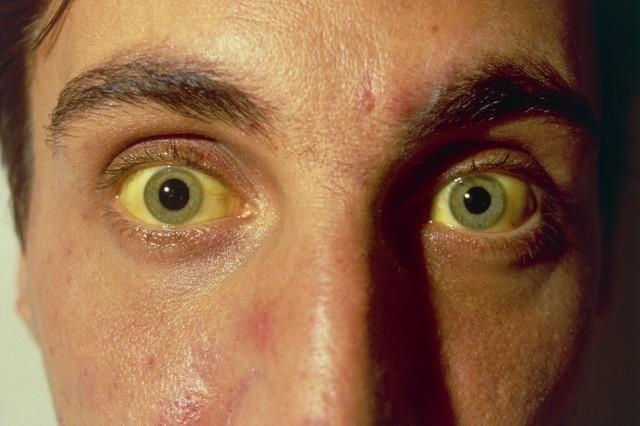
4. Pain in both ribs and abdomen:Although the liver does not hurt, people with chronic liver disease often experience pain in the two ribs, even causing abdominal pain. The Foot Syncopal Liver Meridian passes through the two ribs, and prolonged liver depression and stagnation can be painful.
5. Emotional problems: anger hurts the liver, people don't feel liver problems when they are angry and excited. When people are calm, they really feel angry liver pain. Problems with the liver, resulting in liver qi stagnation, people "angry as anger", liver disease will make people in a bad mood, easy to anger. In addition, liver problems, but also easy to make people panic, emotional instability, easy to insomnia.
6. Vision lossLiver problems affect the eyes, and in addition to jaundice in the eyes, the eyesight is also affected by "unclear vision, black eyes".

7. Gray stool
Patients with hepatitis who develop jaundice often have light-colored stools, clay-colored stools, or grayish-white stools. Normal human stools contain bilirubin that is excreted from the biliary tract into the intestines, thus forming the normal yellow color of stools.
In the case of hepatitis, bilirubin is not discharged into the intestines, and bilirubin cannot be discharged into the intestines or is discharged less, so the color of the stool becomes lighter or grayish-white. Therefore, grayish-white stools often indicate that there are different degrees of obstruction in the biliary system inside and outside the liver.

8. Digestive tract symptoms: This is one of the most common symptoms of problems with liver disease. Nausea and vomiting, anorexia of greasy food and poor appetite are common symptoms with a very wide range of reasons behind them, liver disease being one of them. Nausea, vomiting and other digestive problems like acid reflux can be signs of liver disease.
summarize
Liver found above these symptoms should be taken seriously, go to the hospital to do a checkup, to prevent the main, maintain good habits, early to bed and early to rise, quit smoking and drinking, and exercise more exercise.
Please like comment plus retweet if you found my answer helpful! Any other questions can be discussed in the comments section! Thanks!
The most common precursors of liver disease are gastrointestinal manifestations, such as nausea, vomiting, diarrhea, anorexia, general weakness, poor appetite, etc. Discomfort or vague pain in the liver area may also occur. In addition, systemic manifestations, such as body weakness, easy fatigue, yellow eyes, yellow urine, yellow skin, and generalized skin itching.
Patients with chronic liver disease will also develop liver palms, spider nevi and a hepatic facies, and in severe cases, ascites, bleeding tendency, subcutaneous bleeding, bleeding from brushing teeth, rectal bleeding, as well as a series of symptoms caused by portal hypertension, such as gastrointestinal hemorrhage, and in severe cases, hepatic encephalopathy and coma.
This question and answer are from the site users, does not represent the position of the site, such as infringement, please contact the administrator to delete.